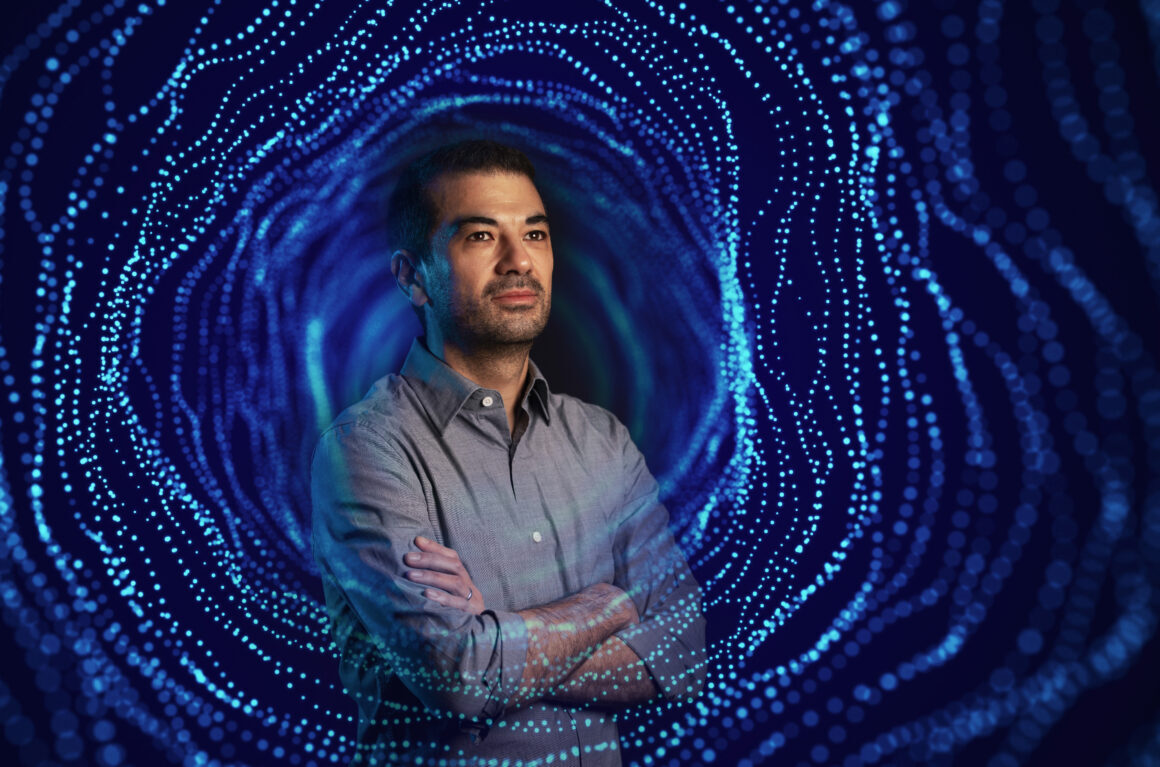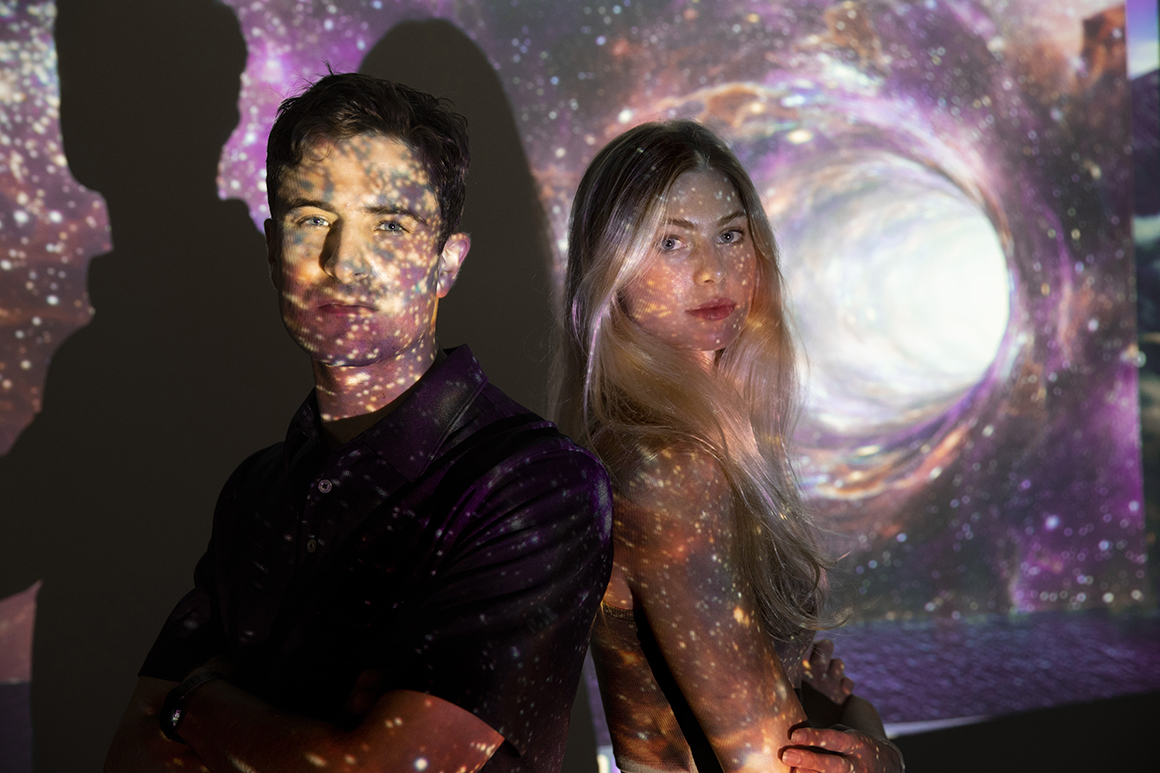As a student researcher with the Weiss Summer Research program at the College of the Holy Cross, Karina Calhoun ’24 hoped to learn and develop new skills. What she experienced was more than she expected: a greater understanding of theoretical physics, a confirmed love of computer science and her name as one of three primary authors of a paper published in a respected scientific journal.
"We really had no idea how it was going to play out, but it was exciting and unexpected," Calhoun said.
Calhoun and fellow Holy Cross student, Brendan Fay ’23, joined Professor Ben Kain for two months during the summer of 2022 studying wormholes — hypothetical bridges, or tunnels between different points in space and time. The results of their combined work were published in November 2022 in "Physical Review D", a key physics publication focused on gravitational and particle physics, in the paper "Matter Traveling Through a Wormhole."
For their study, Kain, Calhoun and Fay took the basics of how one might describe a wormhole within the walls of physics and wrote computer code to evolve forward in time to see how a wormhole would change if something were to be sent through it.
"In our case, we took a pulse of matter and sent it through the wormhole. In our simulations, we saw it go from one side to the other. This caused the wormhole to gradually collapse, almost following in the pulse’s wake," Kain said.
They speculated that despite the collapse, there was a chance that the pulse could send back a signal before the tunnel was pinched shut.
"We found that there was a finite amount of time before it shuts down – not enough time for it to come back – but there is enough time for the matter to send a light signal back," he said.
Making big assumptions from their bare bone simulations, Kain and his team imagined sending some sort of camera or probe through the wormhole, enabling it to send a signal back of what it recorded before there is no longer a pathway back.
"There hasn’t been a lot of study of wormholes. We knew we had to verify our steps – there are a lot of checks and error-fixing built into the computational process — and that we ended with good data," Calhoun said. "It’s many hours of coding, but it’s rewarding work."
As a theoretical computational physicist, Kain’s research relies heavily on pen and paper math calculations and then computer code to solve or verify those calculations. He creates the equations before the students join the process and then turns the work over to them to reproduce known results to build confidence and knowledge before starting on the new project. They then add new ideas and questions to the process and hopefully receive new and interesting results.
The opportunity as undergraduates to work side-by-side with professors on graduate-level research projects, during the academic year or in opportunities like the Weiss Summer Research program, gives Holy Cross students an advantage in their post-graduate paths, Kain said.
Holy Cross Professor, Students Publish Wormhole Data in Respected Physics Journal
The results of their Weiss Summer Research program studies on wormholes is published in Physical Review D.
Read Time
3 Minutes



